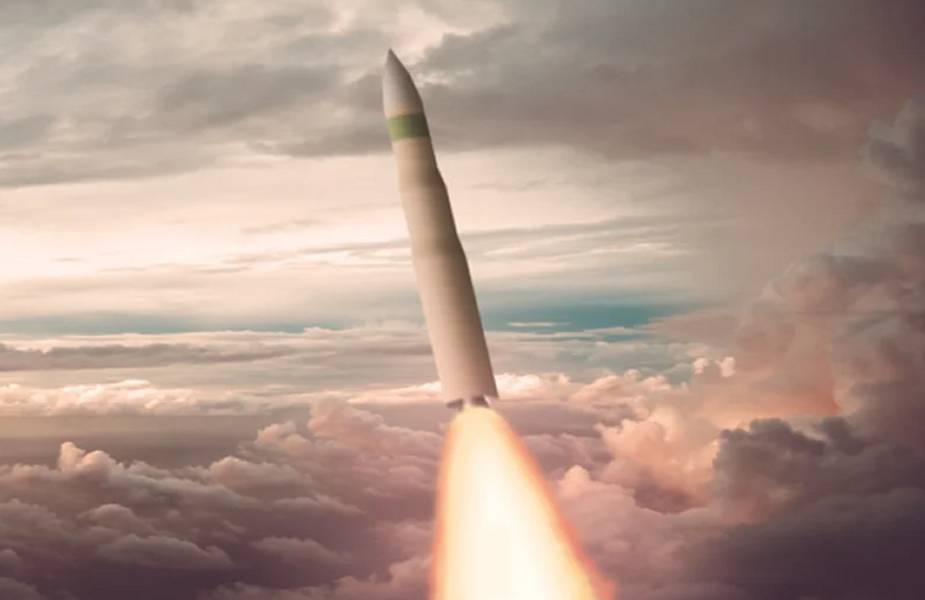The three legs of the U.S. Nuclear Triad are complementary, offering unique attributes that are mutually supporting. Given the uncertain and increasingly volatile security environment, the Nuclear Posture Review (NPR) concluded that a modern Triad possessing attributes of effectiveness, responsiveness, survivability, flexibility, and visibility remains necessary to deter strategic attack, assure allies and partners, and respond in the event of adversary attack.
Follow Army Recognition on Google News at this link

The Sentinel intercontinental ballistic missile system will replace the Minuteman III (Picture source: U.S. Air Force)
To deter large-scale attacks, the United States will maintain a modern, resilient nuclear Triad and support warning and nuclear command, control, and communication (NC3) capabilities. To deter theater attacks and resist nuclear coercion, the United States will continue to field capabilities that support regional security, such as dual-capable aircraft (DCA) and low-yield nuclear systems.
Need for nuclear modernization
Although the U.S. nuclear arsenal remains safe, secure, and effective today, most systems are operating beyond their original design life, risking system effectiveness, reliability, and availability. Replacement programs are ongoing, but there is little or no margin between the end of the useful life of legacy systems and the fielding of their replacements.
The Department of Defense (DoD) is committed to full-scope modernization that will begin fielding modern systems for all three legs of the Triad beginning later this decade. DoD is also executing programs to modernize U.S. DCA and the NC3 architecture. Ongoing nuclear force modernization programs include:
► Ground Leg: The Sentinel intercontinental ballistic missile system will replace the Minuteman III.
► Sea Leg: The Columbia-Class SSBN will replace the OHIO-Class SSBN; and the Trident II D5 Life
Extension Program (LEP) 2 will replace the Trident II D5 LEP.
► Air Leg: The B-21 Raider will replace the B-2A Spirit; the Long-Range Standoff Weapon will replace
the AGM-86 air-launched cruise missile, and the B-52H Stratofortress will undergo upgrades to its
engines and communications systems.
► DCA: The B61-12 Life Extension Program will replace legacy B61 gravity bombs; the F-35A DCA
will replace aging U.S. and NATO Ally 4th generation fighter aircraft.
A credible and effective deterrent also requires a modern nuclear enterprise. Today, much of the U.S. nuclear stockpile has aged without comprehensive refurbishment even as the geopolitical environment has deteriorated.
To support Triad modernization programs, continued revitalization of the nuclear enterprise, including a strong and diverse workforce, is essential and requires continued, timely investments in science and production infrastructure. As part of the integrated effort to modernize U.S. nuclear capabilities, DoD will continue to support the Department of Energy’s National Nuclear Security Administration in its efforts to life-extend and modernize nuclear weapons and the infrastructure required to design, certify, and manufacture nuclear weapons.
This effort supports the National Defense Strategy guidance to build enduring advantages across the defense ecosystem by modernizing the systems that design and build the Joint Force, and making these systems more resilient and agile in the face of a diverse range of threats.














